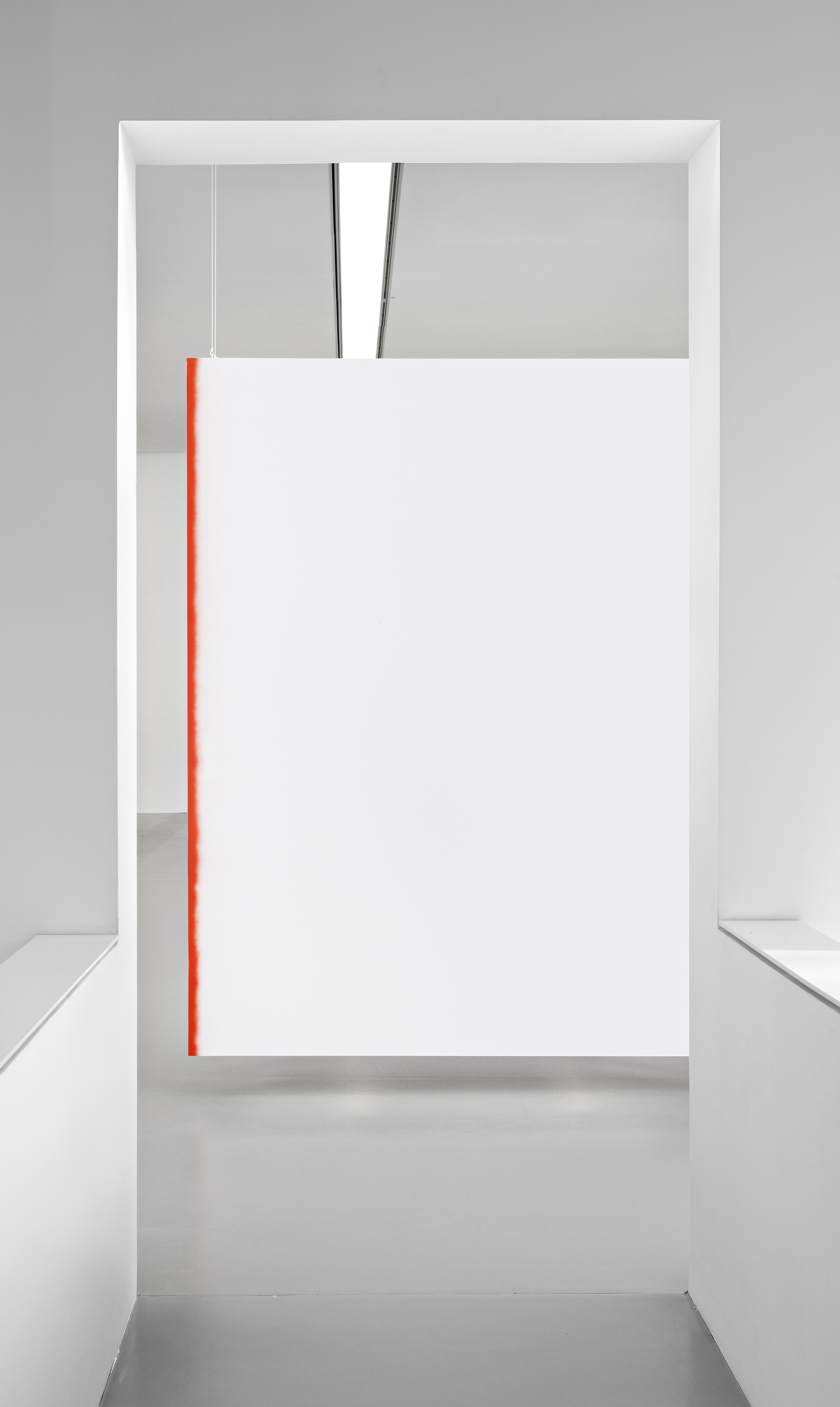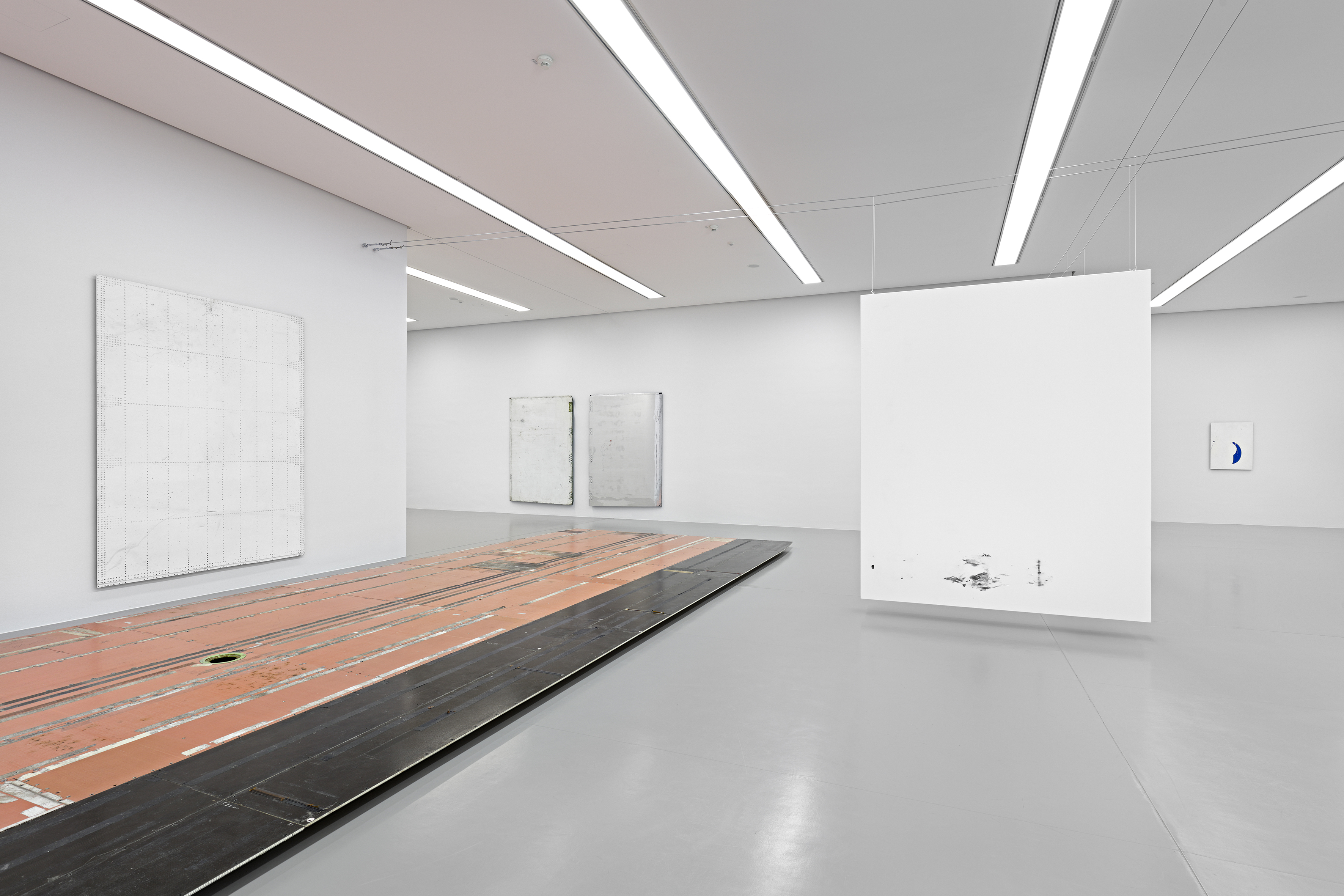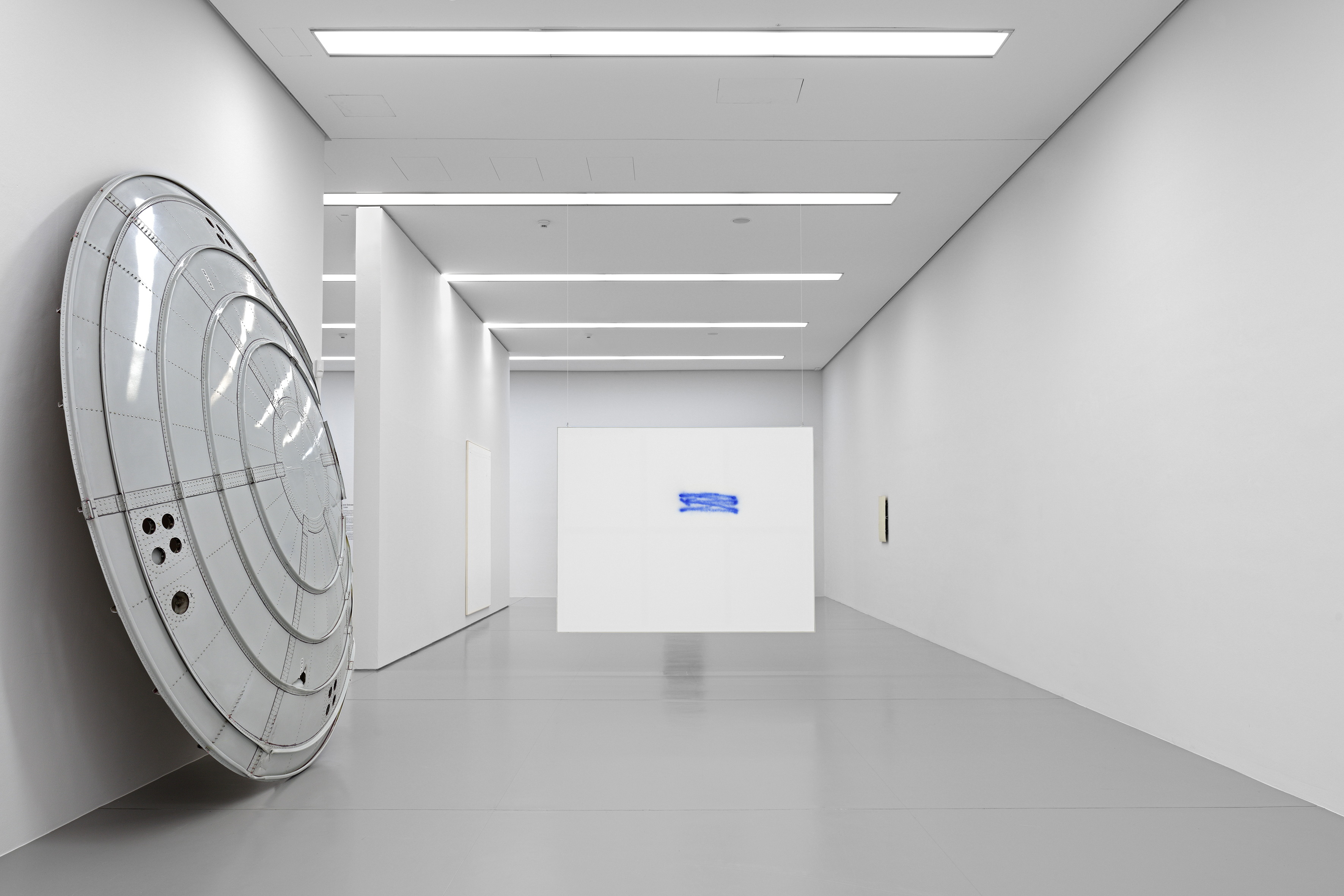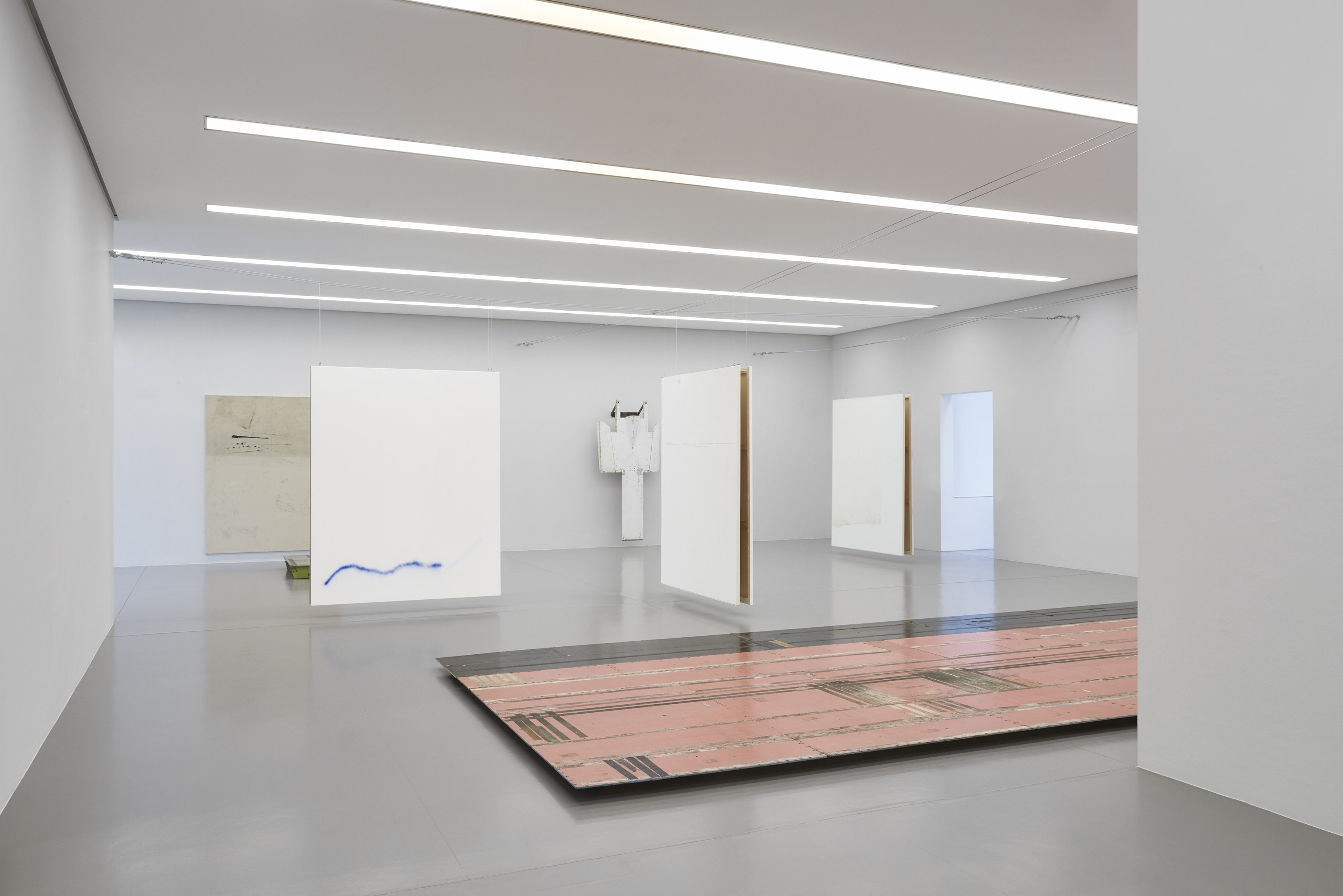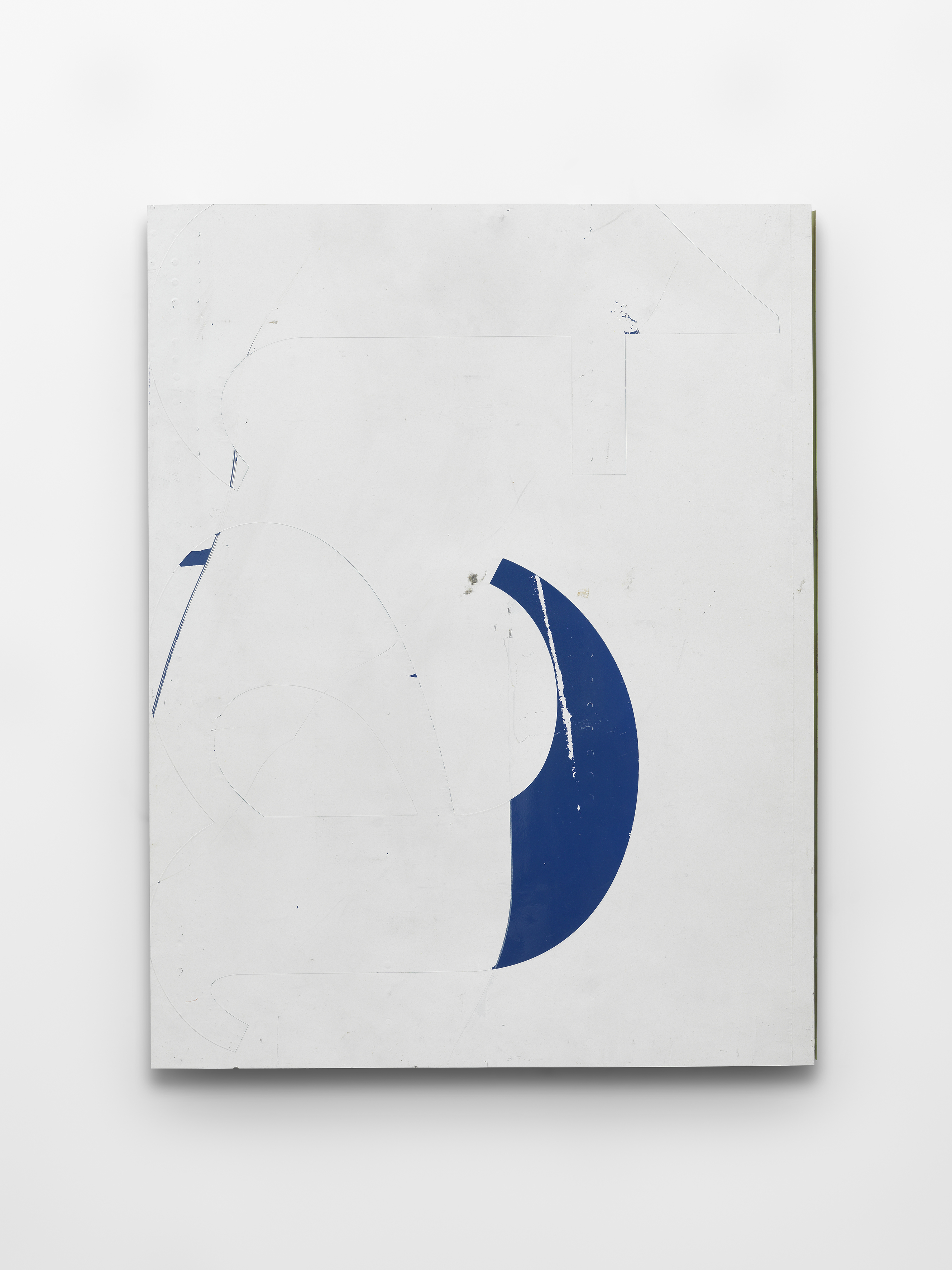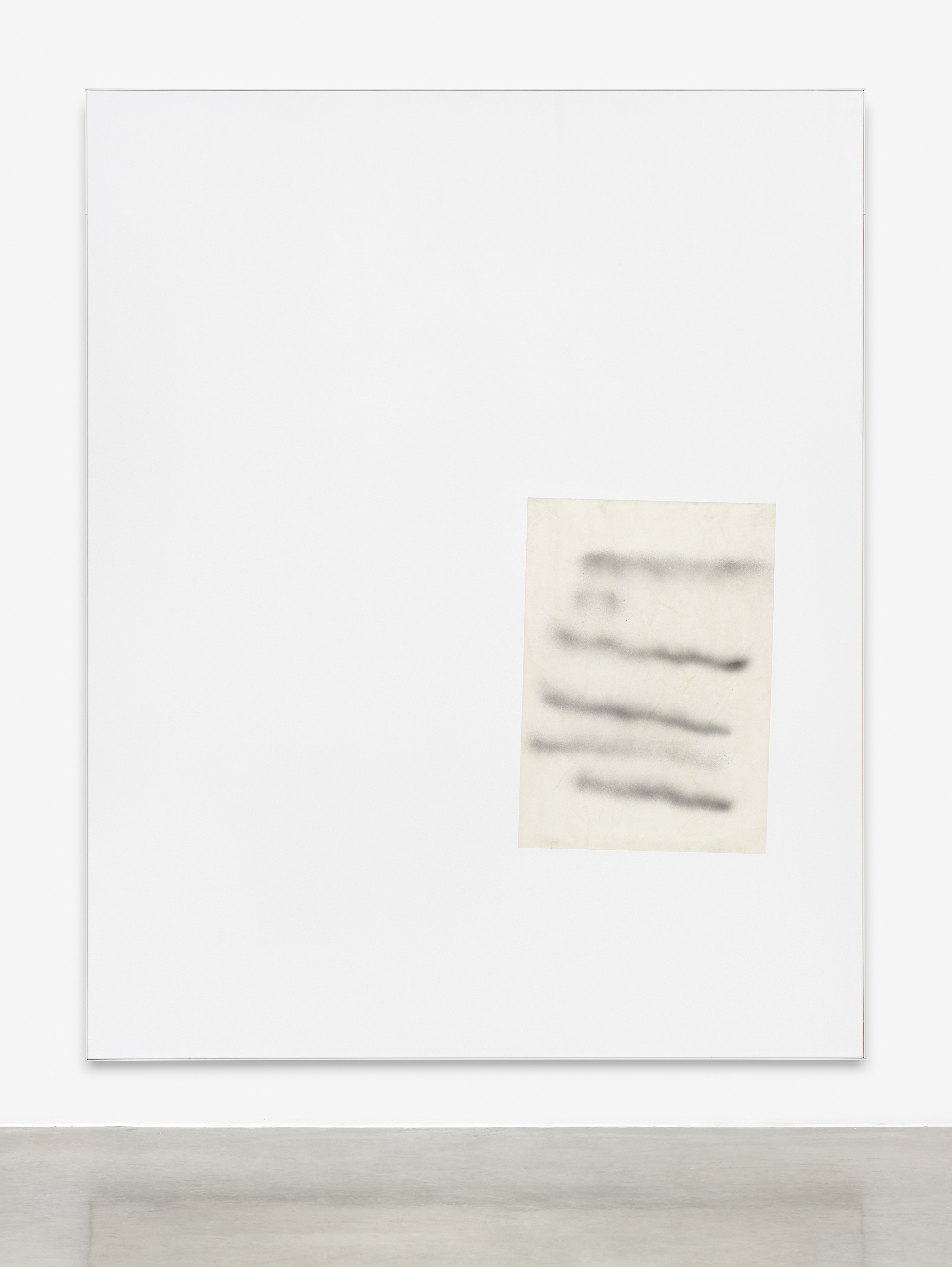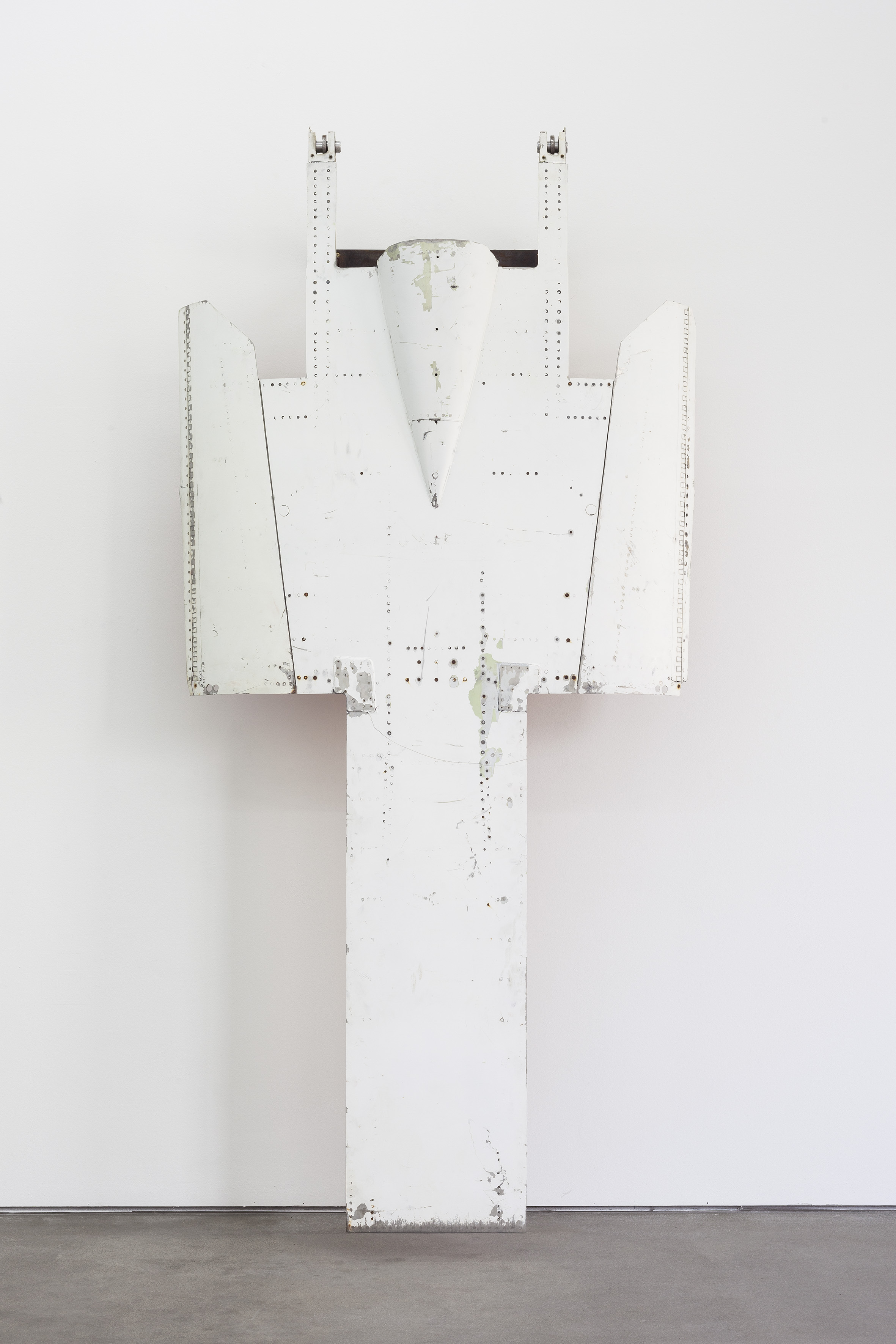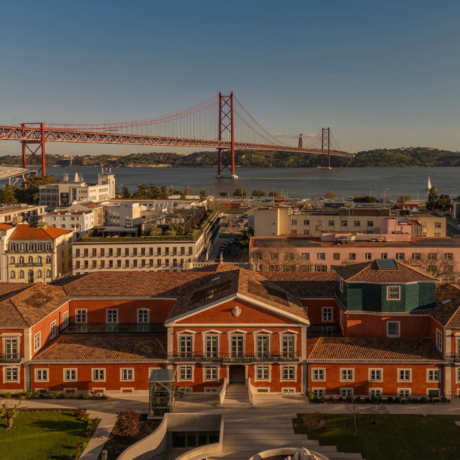The category of the aesthetic is more crucial to our self-image than ever before. We are experiencing an unusual proliferation of the artistic at an ever-growing number of exhibitions, biennials and fairs, in a market that deals paintings like convertible bonds, in everyday life. Nevertheless, the aesthetic has become more and more characterized by the experience of loss.
Contemporary art has a tendency to shut out aesthetic experience in the classical sense. Its most important value creation mechanisms–conceptually-mediated knowledge, for example, sociopolitical or institutional critique, or simply investment appeal, closely tied to the idea of the decorative–leave little room for the kind of perceptual experiences where the mere act of looking does something to a viewer, grips them and does not let go.
Surprisingly, this ephemeral quality is precisely where the works by young Cologne artists Michail Pirgelis and David Ostrowski take hold. The terse, ironic title of the exhibition To Lose (showing now at Leopold Hoesch Museum in Düren)–not accidentally reminiscent of the phrase: ‘Nothing left to lose’–could be understood as a programmatic goal of the two artists’ projects. Here, ‘there’s nothing to lose’ has become ‘you can only lose’. They are two artists that accept the often inevitable-seeming failure of art and take it seriously–and in doing so, open unexpected, aesthetic spaces of desire and experience. Working under a new set of circumstances, they bring an idea into focus that could be described as ‘beauty’ (for lack of a less-loaded term). Both artists open up a perceptual space where, time and again, the viewer experiences moments of the meditative and sublime.
At first, the two bodies of work could hardly seem more different. Where Ostrowski explores painting and its zero point with such basic artistic materials as canvas, spray paint, paper and leftover bits of adhesive tape, Pirgelis creates enigmatic objects from scrapped airplanes–objects that push the limits of what sculpture can be today. Despite this distance in genre, material and working process, works by the two artists share a visual affinity. This affinity can be traced in part to biography. Ostrowski and Pirgelis have been close friends since their time at the Kunstakademie Düsseldorf, where they studied in the classes of Albert Oehlen and Rosemarie Trockel respectively. The two artists shared a studio for a time, have exhibited together in the past, co-initiated the Vosberg-Projekt, an art space in Cologne, and Bar MD. Even still, this visual affinity is something of a mystery. Artistically, the works of Ostrowski and Pirgelis move in completely different orbits, though the orbits do converge at a point.
At the very latest since Adorno discredited beauty as an admission manufactured by the culture industry, it is a category considered disputable at best. It is too tied to seemingly inevitable clichés of bourgeois mainstream culture. Most contemporary artists regard it as something superficial and uninteresting, a historical relic whose entry into the work is considered almost dangerous. Yet the idea of beauty proves astonishingly resilient. Despite its obvious contradictions, it remains on the horizon of every art viewing, the spectre of every artistic communication. Whether the desire for it is open or subliminal, we like to enjoy looking at art. We cannot describe the moment it happens, but we know how it feels, how we experience it. A viewer experiences these kinds of moments extremely often when looking at works by Ostrovski and Pirgeli, without being able to say why at first.
The first thing one notices about Michail Pirgelis’ work is his subtle play with the aura of found materials. Here, larger than life-sized metal objects lean against the wall like relics of an alien civilization. Large wall works with scratches, bits of paint and varnish have the look of heavy canvases. Floorboards with boreholes and traces of carpet recall sections of an intensively-used studio floor. While all of these objects share clear references to Minimalism and abstraction, their twarting of this art historical tradition could not be more radical. None have the pristine, immaculate surfaces we know from the work of Donald Judd or Carl André; none are ‘invented’, ‘produced’ or even ‘commented upon’. They cannot even be seen as readymades, because the original purpose of these objects is not readily apparent. The objects’ material and preexisting form are completely detached from their original purpose.
Pirgelis makes only minimal interventions to the found materials. He leaves most of the objects’ painted surfaces as he found them. He sometimes grinds and polishes specific sections, removes elements of lettering or uncovers ‘rivet drawings’. But essentially, the viewer becomes witness to a surface marked by weather conditions and wear, by the sand, sun and desert storms that assailed the aircraft cemeteries where Pirgelis discovered them. They are complex aesthetic surfaces whose references are clearly geared toward the painterly. In a sense, these objects can also be read as ‘found abstraction’–a pictorial game that condenses their aesthetic in an unpredictable way.
Even when you know these objects are made from airplane parts, their essential indeterminacy is impossible to shake. Pirgelis’ works take the viewer to the limits of his or her unconscious knowledge of what an object can be. They are sculptures that stage a fundamental uncertainty–one that causes these works to frustrate their own object character and situate themselves on the threshold of non-objecthood.
It is not hard to see a kinship to the surface effects in work by David Ostrowski–only what Pirgelis ‘finds’, Ostrowski paints. For his confident, philosophical circumnavigations around the non-motif, Ostrowski pares his selection of painting materials down to the bare minimum. The often large-format, monochrome works show a trace of black or ultramarine blue here and there, sometimes yellow or lime green spray paint (rarely any other color), usually applied in an unspectacular but compositionally-effective line or outline, a kind of inner frame that shifts the outer border of the canvas to the picture. Some of the works show signs of dirt and feet that have walked over the canvas, remnants of adhesive tape and paper. At times the gesso has been left off certain areas, creating an ‘ex negativo’ for the only kind of brushstrokes found in the artist’s work. They are works characterized not only by a distinct resistance to artistic conventions, but also by the methodical enabling of chance and mistakes, intuition and blunders.
But this visual simplicity is deceiving. The paintings are the result of a deliberate discarding of painterly codes, traditions and systems. In them we see the attempt to track down the ‘degree zero’ behind these codes and traditions, fully aware of the fact that this zero point is impossible to achieve. Paradoxically, this results in highly atmospheric works that testify to an extraordinary aesthetic sensibility. It is a sensibility aimed at a painterly densification of emptiness, at a complete artistic self-emptying that takes full account of both the emptiness of the canvas and the emptiness of the world, and also understands this confrontation with the void as a confrontation with the history of painting.
One crucial parallel to Pirgelis’ work lies in the fact that Ostrowski’s works also provoke an unusual relaxation of perception in the viewer, an almost meditative visual process. Obvious art historical parallels could be found in Robert Rauschenberg’s detritus-charged White Paintings, for example, or in paintings intended to evoke a similarly meditative viewing experience such as those by Mark Rothko, Barnett Newman and other late Abstract Expressionists. But like Pirgelis’ works, Ostrowski’s very clearly frustrate the subliminal, ideological approaches of these same predecessors. His works bar pathos of any kind and his rejection of the notion of the canvas as a holy place could not be more resolute. If Ostrowski’s paintings touch on these references, then it is only to orchestrate their own failure and to show what lies behind it.
The works of both Ostrowski and Pirgelis elude, with surprising consistency, any attempt at categorization and aesthetic allocation; they seem enigmatically undescribable, almost originless. Despite their art historical references, they appear opposed to the painterly and sculptural traditions of contemporary art. The forced deactivation of painterly and sculptural knowledge in this work ensures a basic pictorial uncertainty–one that fathoms the aesthetics of the indefinite, triggering a sensory effect that lies somewhere between rebellion and sublimity.
The beauty emanating from many of these works is a beauty of the void, of the lived and the remote–a beauty of semantic renunciation. It takes the viewer to the city outskirts, to the vacant, decaying buildings of postwar modernity, to the residue of scrubbed-away graffiti at railway crossings, runs a hand over the variegated surfaces of decommissioned machines. It is a beauty that braces itself against a sense of purpose and painterly and sculptural convention–not out of allegiance to a critical ideology, or from nihilistic hopelessness, but in an attempt at a radical preservation of visual openness–an attempt to open itself to the unexpected, the unknown and the possibility of contingency. Ostrowski and Pirgeli’s work often succeeds in doing something unimaginable: they recreate the space of the object and the canvas as a space for singular irruptions of perception. Their project is nothing less than that of liberating vision.
‘To Lose’ by Michail Pirgelis and David Ostrowski is showing at the Leopold Hoesch Museum, Düren until 29 May 2016
